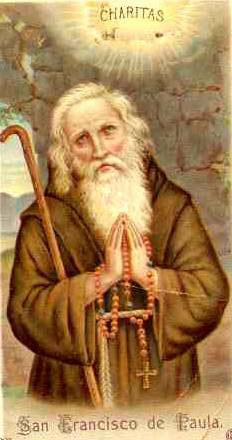We ask you, urgently: don't scroll past this
Dear readers, Catholic Online was de-platformed by Shopify for our pro-life beliefs. They shut down our Catholic Online, Catholic Online School, Prayer Candles, and Catholic Online Learning Resources essential faith tools serving over 1.4 million students and millions of families worldwide. Our founders, now in their 70's, just gave their entire life savings to protect this mission. But fewer than 2% of readers donate. If everyone gave just $5, the cost of a coffee, we could rebuild stronger and keep Catholic education free for all. Stand with us in faith. Thank you.Help Now >
Vittore Carpaccio
FREE Catholic Classes
A Venetian painter whose real name was Scarpazza, b. at Venice about 1455; d. in the same city between 1523 and 1526. He was one of those Venetian masters who formed a link between the earlier artists, such as Jacobello del Fiore and the classic painters like Giorgione and Titian. Lazzaro Bastiani was his teacher, not, as Vasari has maintained, his pupil. Being an artist who worked for the middle classes of Venetian society, Carpaccio enjoyed neither the official position nor the aristocratic patronage that fell to the lot of the Bellinis. It was only in 1501 that he received orders for the Doge's Palace, where he painted the "Lion of St. Mark ", still to be seen there, and the "Battle of Ancona ", destroyed in the fire of 1577. In 1508 he was one of the commission appointed to set a valuation upon Giorgione's frescoes at the Fondaco dei Tedeschi.
Nearly all of Carpaccio's lifetime was spent in painting for the scuole (schools) or religious confraternities either of artisans or foreigners. It was for one of these that he executed the most celebrated and extensive of his works "The Life of St. Ursula ", now preserved in the Academy of Venice. His other paintings were produced, doubtless, under similar circumstances. They usually depicted the lives of the saints, and they included such subjects as: "The Life of the Virgin", "The Life of St. Stephen ", "The Life of St. Jerome ", and "The Life of St. George ". The first two are found in museums of Europe, but about 1560 the others were placed, with the "Miracle of St. Tryphonius" and the "Call of St. Matthew ", in the little Venetian church of San Giorgio de Schiavoni, the best place in the world in which to make Carpaccio's acquaintance. The eight unframed panels found in the church of Saint Alviso, signed "Carpathius" and dealing with the histories of Joseph, the Queen of Sheba, Job, and Rebecca, are attributed, although without positive proof, to the youthful period of the master.
Carpaccio's style, like that of all the Venetian painters of the time, bore the imprint of Mantegna's influence. Architecturally he was inspired by Lombardi, but his peculiar charm lay in knowing better than any other artist how to reproduce the incomparable grace of Venice. Long before the time of Guardi and the Canalettis, Carpaccio was the historian and the poet of its calle and canali , and his work, together with Marin Sanudo's Journal, provides the best picture extant of the golden age of the republic. Carpaccio was the most truly Venetian of all the artists of Venice, and, of course, it is there that he can be best understood and appreciated. Moreover, he was the most Oriental, and his work abounds in the costumes and views of the East. In 1511 he had completed a panorama of Jerusalem that he offered in a letter to the Marquis of Mantua. It might naturally be supposed that Carpaccio had accompanied Gentile Bellini to Constantinople, but it has been ascertained that he limited himself to copying Reuwich's pictures in Breydenbach's "Itinerary", published at Mainz in 1486.
His genius is of a most realistic turn. He has nothing of Giovanni Bellini's deep, religious lyricism; besides, his expression lacks vigour. His "Martyrdom of the Ten Thousand of Mount Ararat" in the Academy of Venice is among his feeblest efforts, being merely a happy, tranquil, although quite pleasing, conception, luminous and life-like, and characterized by exquisite dignity and an indescribable air of cheerful heroism. His great equestrian picture of St. Vitalis at Venice was the most beautiful piece of decorative painting prior to the time of Paul Veronese. When pathetic, Carpaccio is charming. Nothing is more instructive than to compare his "Life of St. Ursula " with Memling's famous shrine in Bruges. With the Venetian everything merges into splendid spectacles and ceremonies. However, his "Saint's Vision" is one of the most beautiful paintings of virginal sleep ever made. His "St. Jerome in his Cell" yields nothing in point of nobility to Dürer's fine print, and his last pictures, such as "The Holy Family" at Caen and the eloquent "Pieta" at Berlin, reveal a soulful intensity of which his earlier productions gave no promise.
Join the Movement
When you sign up below, you don't just join an email list - you're joining an entire movement for Free world class Catholic education.

-

- Stations of the Cross
- Easter / Lent
- 5 Lenten Prayers
- Ash Wednesday
- Living Lent
- 7 Morning Prayers
- Mysteries of the Rosary
- Litany of the Bl. Virgin Mary
- Popular Saints
- Popular Prayers
- Female Saints
- Saint Feast Days by Month
- Pray the Rosary
Pope Francis’ April Prayer Intention: Using Technology to Strengthen Human Connections
Finding Peace Through Prayer in a World of Worry
Trump Administration Withholds Federal Grants from Planned Parenthood Over DEI and Civil Rights Concerns
Daily Catholic
 Daily Readings for Wednesday, April 02, 2025
Daily Readings for Wednesday, April 02, 2025 St. Francis of Paola: Saint of the Day for Wednesday, April 02, 2025
St. Francis of Paola: Saint of the Day for Wednesday, April 02, 2025 Prayer for God's Help in Daily Actions: Prayer of the Day for Friday, March 14, 2025
Prayer for God's Help in Daily Actions: Prayer of the Day for Friday, March 14, 2025 Daily Readings for Tuesday, April 01, 2025
Daily Readings for Tuesday, April 01, 2025 St. Hugh of Grenoble: Saint of the Day for Tuesday, April 01, 2025
St. Hugh of Grenoble: Saint of the Day for Tuesday, April 01, 2025- To Perceive Animals as God's Gifts: Prayer of the Day for Thursday, March 13, 2025
![]()
Copyright 2025 Catholic Online. All materials contained on this site, whether written, audible or visual are the exclusive property of Catholic Online and are protected under U.S. and International copyright laws, © Copyright 2025 Catholic Online. Any unauthorized use, without prior written consent of Catholic Online is strictly forbidden and prohibited.
Catholic Online is a Project of Your Catholic Voice Foundation, a Not-for-Profit Corporation. Your Catholic Voice Foundation has been granted a recognition of tax exemption under Section 501(c)(3) of the Internal Revenue Code. Federal Tax Identification Number: 81-0596847. Your gift is tax-deductible as allowed by law.


 Daily Readings for Wednesday, April 02, 2025
Daily Readings for Wednesday, April 02, 2025 St. Francis of Paola: Saint of the Day for Wednesday, April 02, 2025
St. Francis of Paola: Saint of the Day for Wednesday, April 02, 2025 Prayer for God's Help in Daily Actions: Prayer of the Day for Friday, March 14, 2025
Prayer for God's Help in Daily Actions: Prayer of the Day for Friday, March 14, 2025 St. Hugh of Grenoble: Saint of the Day for Tuesday, April 01, 2025
St. Hugh of Grenoble: Saint of the Day for Tuesday, April 01, 2025

